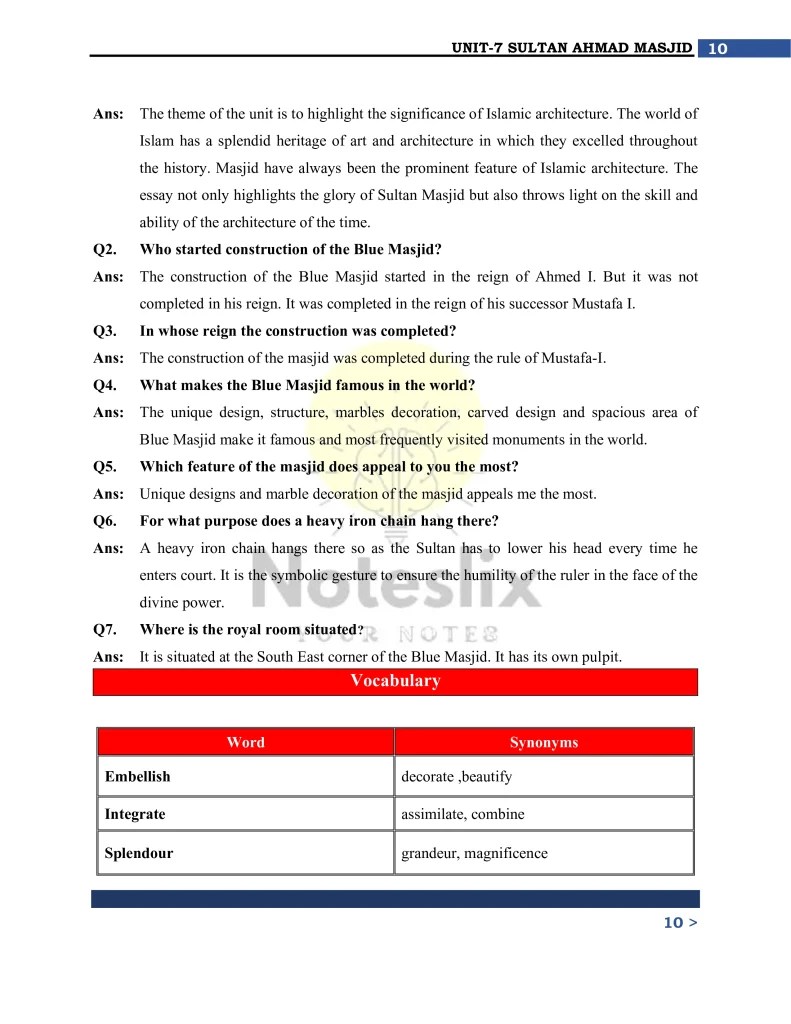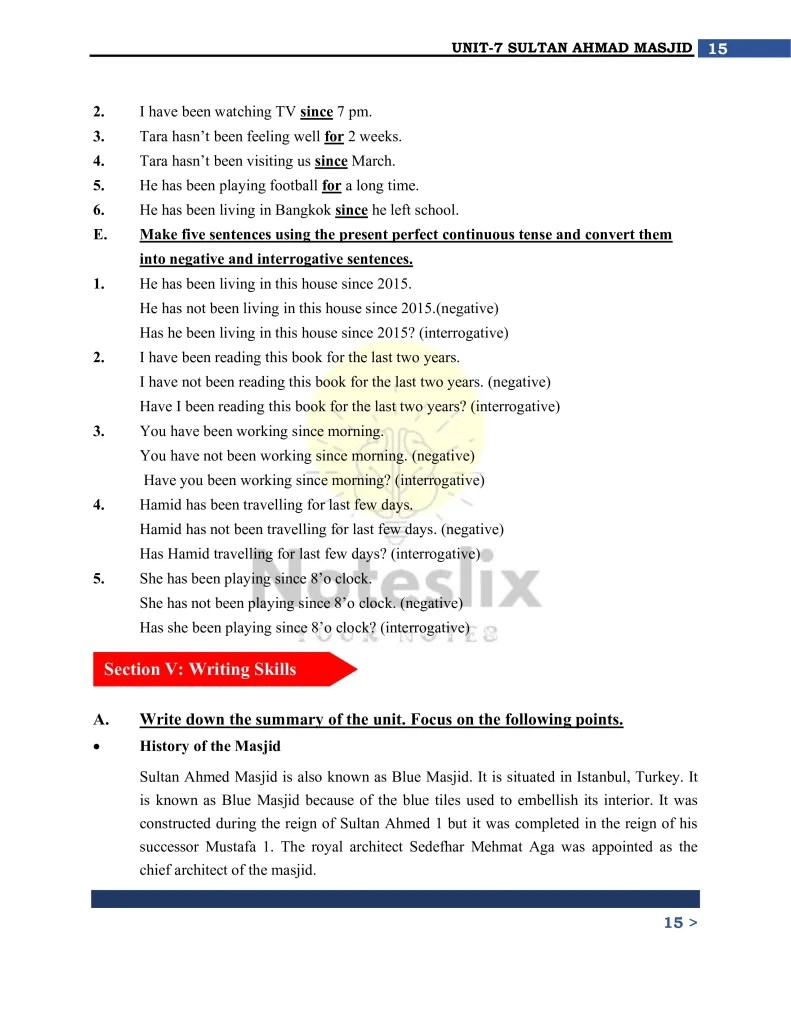The Sultan Ahmad Masjid, commonly known as the Blue Masjid, is a symbol of Islamic heritage and architectural brilliance. Featured in Class 9th English Unit 07, this topic highlights its historical significance,
Intricate design, and cultural impact. This article focuses on the key points and exercises from the lesson, ensuring a comprehensive understanding for students aiming to excel in exams.










Class 9th English Unit 07 Complete Exercise
Topics Covered in These Notes
These notes for Unit 07 include:
- The history and construction of the Sultan Ahmad Masjid.
- Architectural details of the Blue Masjid, reflecting Ottoman and Byzantine styles.
- Key features such as its six minarets, hand-made ceramic tiles, and symbolic gestures like the heavy chain.
- Vocabulary with synonyms and meanings for better comprehension.
- Detailed answers to comprehension questions.
History and Significance of the Masjid
The Sultan Ahmad Masjid, built between 1609 and 1616 during the reign of Sultan Ahmad I, stands as an architectural marvel. It was constructed under the supervision of the royal,
Architect Sedefhar Mehmat Aga. Known for its blue ceramic tiles, the masjid remains a frequently visited monument in Istanbul and a testament to Islamic architecture.
Vocabulary and Synonyms
The lesson includes important vocabulary from the text, along with their synonyms for enhanced learning. Some examples:
- Impressive: Remarkable, touching.
- Embellish: Decorate, adorn.
- Splendour: Grandeur, magnificence.
- Illuminate: Brighten, light up.
This section provides students with a thorough understanding of the context and nuances of the English language.
Architectural Details
The masjid’s lower level showcases over 20,000 hand-made ceramic tiles in 50 unique tulip designs. The upper interior is adorned with blue paint and intricate stained-glass windows.
Chandeliers illuminate the space, while carved marble and a richly decorated pulpit highlight its grandeur. The six minarets, an iconic feature, add to its magnificence.
Tool for Success in Exams
These notes are an essential resource for students. By focusing on vocabulary, comprehension, and detailed analysis, they provide a solid foundation for understanding the lesson and acing exams. The structured approach ensures that all critical elements of the text are covered effectively.
Colored Notes
The notes for Unit 07 include visually appealing highlights and color-coded sections, making it easier for students to focus on critical details. Vocabulary terms, synonyms,
And key historical points are presented in distinct colors, enhancing readability and retention. This approach ensures students can quickly locate essential information during revision.
Notes Are Free to Use
The notes provided for Class 9th English Unit 07 are completely free to use. Designed with a focus on student needs, they eliminate the hassle of searching for expensive resources. These accessible notes empower students to learn effectively and achieve better results without financial constraints.
Notes Are Mistake-Free
Every effort has been made to ensure that these notes are accurate and error-free. Verified by educators, they include precise vocabulary meanings, correct comprehension answers, and reliable historical facts. This guarantees students can rely on the notes without the risk of encountering misleading information.
Unit 07 Class 9th English Notes
Conclusion
The Sultan Ahmad Masjid represents a blend of history, art, and Islamic values. These comprehensive notes for Class 9th English Unit 07 provide students with everything they need to excel in exams.
From detailed vocabulary to architectural insights and free-to-use resources, this article ensures a complete understanding of the topic.

